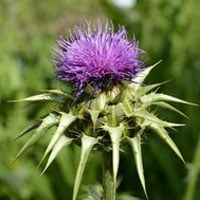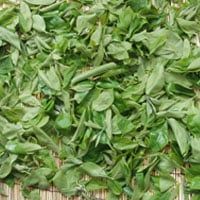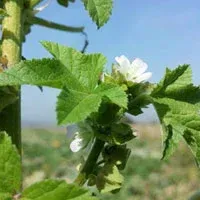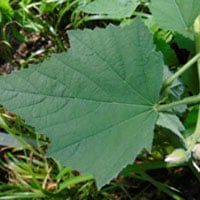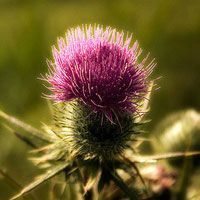Frequently Asked Questions about Holy Tea with Blessed Thistle
Unlock Health Insights: Consult Our Holy Tea FAQ Today!
Explore our comprehensive FAQ section on Holy Tea, which includes ingredients like Blessed Thistle, Malva Leaves, Marshmallow Leaves, and Persimmon Leaves. Before incorporating Dr. Miller's Holy Tea into your routine, we strongly advise consulting your healthcare provider.
Blessed thistle has held a prized place in European herbal traditions since medieval times, often celebrated for its benefits to digestion and overall vitality. Traditionally, herbalists have turned to blessed thistle to:
- Stimulate appetite and encourage healthy digestion, especially useful for those needing digestive support.
- Serve as a nutritive tonic, sometimes even enjoyed as a cooked vegetable in earlier centuries.
- Feature in herbal extracts, cordials, and bitters, highlighting its key role in supporting the digestive tract.
Its reputation is further endorsed by the German Commission E, which approves its use for promoting appetite and facilitating the digestive process. In modern times, blessed thistle's bitterness also finds its way into the flavor profiles of classic liqueurs like Benedictine.
Interestingly, blessed thistle shares similarities with other well-known thistles. For example, milk thistle is widely regarded for its support of healthy liver function. Herbal experts, including Michael Moore, recommend blessed thistle in much the same way as other ‘bitters’—plants like barberry and gentian—for anyone seeking gentle stimulation of the upper gastrointestinal system.
The Historical Roots of Blessed Thistle in Herbal Traditions
Blessed thistle, botanically known as Cnicus benedictus, has quite a remarkable backstory in the world of herbal remedies. This herb first gained notoriety in the Mediterranean and soon made its way into the annals of European herbalism, with records stretching all the way back to the Middle Ages.
Its reputation as a digestive ally and general wellness tonic took root in monastery gardens, where monks cultivated it not only for its prickly beauty but also for its perceived medicinal benefits. European folk healers often turned to blessed thistle to support appetite and digestion, a use that was later codified by the German Commission E, which approved it for just that purpose. Its slightly bitter taste also made it a favorite addition to herbal extracts, bitters, and even liqueurs—notably, it’s one of the secret ingredients in France’s legendary Benedictine liqueur.
Beyond the apothecary, blessed thistle also found a home in the kitchen, sometimes eaten as a cooked vegetable. Spiritual traditions layered on additional uses, including purification baths and even amulets believed to ward off evil.
If you’re a fan of Shakespeare and love a good trivia tidbit, you’ll appreciate that blessed thistle even had a cameo in Much Ado About Nothing. Over in the world of botanically-minded beverages, it continues to inspire curiosity as part of storied elixirs and herbal blends.
In summary, blessed thistle’s legacy is a tapestry woven from centuries of digestive support, culinary adventure, spiritual significance, and just a dash of literary fame.
What is the history of blessed thistle’s use in European folk medicine and monastery gardens?
Blessed thistle has a long and colorful legacy in European tradition. After its early beginnings in Ayurvedic practices, this herb traveled westward and quickly became a fixture in medieval Europe. By the 1500s, monks were tending blessed thistle in their cloistered gardens, relying on it as a staple remedy for a variety of ailments. Its reputation spread beyond monastery walls, slowly weaving itself into the fabric of folk medicine across the continent. In fact, the plant’s virtues were so well-recognized that even Shakespeare nods to blessed thistle in his classic comedy Much Ado About Nothing, cementing its status as a medicinal and cultural favorite.
Is Dr. Miller’s detox Tea safe for children to drink?
Absolutely, Dr. Miller's Teas are suitable for children. We suggest that a child consumes between 2 to 4 ounces of any variety of Dr. Miller's Teas daily. You might need to modify this quantity based on its impact on the child's bowel movements. It's important to aim for the child to have 2 or 3 bowel movements each day.
How to Prepare the Tea for Children
For best results, add 1–2 teaspoons of tea to 8 oz of boiling water. Allow the tea to steep for 5–7 minutes before serving. If possible, use filtered water, as the quality of water can significantly affect the taste. Let the tea cool to a safe, lukewarm temperature before giving it to your child.
Always monitor how your child responds and adjust the amount as needed for their comfort and health.
What are the ingredients used to make Holy Tea?
The tea ingredients are an herbal blend crafted from all-natural and organic ingredients which include blessed thistle, holy thistle, persimmon leaves, marshmallow leaves and malva leaves.
Blessed thistle is commonly used in extracts and cordials, valued for its traditional role in herbal blends. Each of these botanicals brings its own history of use—marshmallow leaves, for instance, have been appreciated for their soothing properties, while persimmon leaves are often found in classic herbal teas.
Holy Tea does not contain caffeine.
How do you prepare and steep Blessed Thistle tea?
To prepare Blessed Thistle tea, measure out 1 to 2 teaspoons of the dried herbal blend and add it to 8 ounces of freshly boiled water. Let the tea steep for about 5 to 7 minutes to draw out its beneficial properties and flavor. For the best-tasting cup, we recommend using filtered water, as this can make a noticeable difference in the overall taste and quality of your tea. Enjoy warm, and adjust the strength to your preference by steeping a little longer or adding more herbs if desired.
Is Blessed Thistle tea suitable for digestion, coughs, or increasing breast milk production?
Blessed Thistle tea has been traditionally enjoyed for its potential to support digestive health, help soothe coughs, and encourage breast milk production in nursing mothers. Many cultures have used Blessed Thistle to assist with appetite, ease mild digestive discomforts, and promote natural wellness. However, as with any herbal supplement, please consult your healthcare provider to ensure it's appropriate for your unique needs, especially if you are pregnant, nursing, or have existing health conditions.
How can you reduce the bitterness of Blessed Thistle tea?
If you've found Blessed Thistle tea to be a bit too earthy or bitter for your tastes, you're not alone. Fortunately, there are several simple ways to mellow out its flavor:
- Add Sweeteners: Stir in a spoonful of raw, unfiltered honey or a dash of agave nectar to naturally balance the bitterness.
- Blend with Other Herbs: Combine Blessed Thistle with flavorful herbs like peppermint, cinnamon, or ginger for a more inviting aroma and smoother taste.
- Serve Chilled or with Lemon: Enjoying the tea over ice or adding a slice of fresh lemon can lift the flavor profile and provide a refreshing twist.
Experiment with these options until you find your preferred blend. If you're new to herbal teas, starting with a small amount and adjusting to taste can make the introduction much more pleasant.
What does Blessed Thistle tea taste like?
Blessed Thistle tea has a distinctly earthy, robust flavor with a pronounced bitter edge—think of it as nature’s way of reminding you it means business. On its own, the taste can be a bit bold for some palates. To mellow out the bitterness, many tea drinkers like to pair it with complementary flavors such as fresh peppermint, warming cinnamon, zesty ginger, or a drizzle of raw, unfiltered honey. These ingredients not only mask the bitterness but can also make your cup a more enjoyable part of your daily routine.
What are some recommended ingredients to mix with Blessed Thistle tea?
Blessed Thistle tea has a naturally robust and earthy taste that some may find a bit strong on its own. To mellow out the flavor, consider blending it with other herbal or natural ingredients. Popular choices include peppermint, cinnamon, ginger, or a spoonful of raw, unfiltered honey. These additions can enhance the overall taste experience while still supporting the natural benefits of the tea.
Does Dr. Miller's Holy Tea contain cathartic herbs?
This product contains cathartic herbs. A cathartic is a herb that accelerates defecation. This is a much harsher and stronger action than laxatives, which ease the movement of the bowels.
Pregnant and nursing women, the elderly, children, and individuals suffering from any illness or health condition should consult with a physician prior to using this or any herbal supplement
What are some related species or common names for blessed thistle?
Blessed thistle is also known as holy thistle, and it shares close botanical ties with other members of the Centaurea family, which are sometimes called knapweeds. These related species are found in various regions and are notable for their vigorous growth. If you see references to "holy thistle," rest assured it's simply another name for blessed thistle—no need for confusion!
Where is blessed thistle native to and what does it look like?
Blessed thistle (Cnicus benedictus) originates from the sunny shores of the Mediterranean. This annual herb is part of the daisy family and stands out with its slim, elongated leaves and a dense covering of fine hairs. Its most distinctive feature is the spiky green flowerhead, which definitely catches the eye in any herbal blend.
What are the energetic properties and taste profile of blessed thistle?
Blessed thistle is traditionally known for its cooling and drying energetic qualities, making it a popular choice in herbal blends for promoting balance within the body. When it comes to flavor, expect a pronounced bitter note—a hallmark of many classic herbal teas. This bitterness is not only distinctive but also valued for supporting digestion and overall wellness.
Why am I not using the restroom as others often mention?
You might want to increase your tea consumption or enhance its strength by using additional tea bags.
I've been using the restroom frequently, and I might be feeling cramps from the tea I've had. What should I do?
Take a break from consuming tea for a day. After that, gradually reduce your tea intake or use fewer tea bags when preparing it until you achieve the results you want.
In what locations are the herbs cultivated, and are they grown organically?
The herbs are cultivated in the United States and are organic.
Where does Blessed Thistle tea originate from?
Blessed Thistle tea is made from the leaves and flowering tops of the Cnicus benedictus plant. This herb is native to the Mediterranean region, where it has a long history of use in traditional herbal practices for its wellness-supporting properties.
What is the sustainability rating of blessed thistle based on certain criteria?
Blessed thistle receives strong marks for sustainability. Here’s a breakdown:
- Origin Distance: Sourced locally within the contributing minimal transportation impact.
- Organic Practices: Grown using certified organic methods, ensuring no synthetic pesticides or fertilizers are used.
- Fair Trade Standards: While the herbs are cultivated by growers following responsible practices, not all blessed thistle is certified fair trade.
- Waste Reduction: Growers strive for minimal waste throughout the harvesting and processing stages.
- Sustainable Certifications: Some sources may carry additional sustainability certifications such as. For Life or equivalent programs.
- Energy Usage: Efforts are made to conserve energy during production and packaging.
Overall, blessed thistle is evaluated favorably for its sustainable agricultural and production practices.
Where is Dr. Miller’s Holy Tea made?
Dr. Miller’s organic detox Holy Tea is made in the United States.
How many servings are included in each Blessed Thistle tea package size?
Our Blessed Thistle tea is available in a variety of sizes to fit your needs:
- 2 oz Bag: Provides about 30 servings.
- 1/2 lb Bulk Bag: Contains approximately 120 servings—great for regular tea drinkers.
- Sample Bag: Perfect for trying it out, offering 3 to 5 servings per bag.
Choose the size that best matches your tea routine or let yourself sample it before committing to a larger amount.
Why does your Holy Tea packaging have “Youthin” on the label?
Dr. Miller includes Youthin on the label since Holy Tea is an integral component of his Youthin product line.
Is it OK to drink Dr. Miller’s Holy Tea if I am taking other medication?
Dr. Miller suggests that you consume his Holy Tea either one hour prior to or one hour following your medication.
Does Dr. Miller’s Holy Tea contain caffeine?
No, Dr. Miller’s Holy Tea does not contain caffeine like other teas on the market
Can I drink Dr. Miller’s Holy Tea hot or cold?
Yes, you can drink Dr. Miller’s tea hot or cold.
How long can I drink Dr. Miller’s Holy Tea?
You may drink Dr. Miller’s Holy Tea as long as you desire. Dr. Miller’s Teas contain NO SENNA. Senna leaves a residue in the colon that could lead to health problems.
Holy Tea does not contain caffeine.
Is it safe for me to consume Dr. Miller's Holy Tea during pregnancy?
It may not be suitable for pregnant women. This product contains cathartic herbs. Pregnant and nursing women, the elderly, children, and individuals suffering from any illness or health condition should consult with a physician prior to using this or any herbal supplement
This product contains cathartic herbs. A cathartic is a herb that accelerates defecation. This is a much harsher and stronger action than laxatives, which ease the movement of the bowels.
Pregnant and nursing women, the elderly, children, and individuals suffering from any illness or health condition should consult with a physician prior to using this or any herbal supplement
Will drinking Holy help eliminate Candida yeast?
Dr. Miller indicates that overgrowth of Candida yeast may likely to be the result of a dirty colon. To help in cleaning the colon you should drink 8 oz of organic Holy Tea at least twice a day (with breakfast and dinner).
Is Dr. Miller's Holy Tea a Scam?
No. Dr. Miller's Holy Tea really exists. It is a unique organic herbal tea blend of all-natural ingredients specially formulated by Dr. Bill Miller.
The name is taken from the traditional name of one of the ingredients, a widely-used medicinal herb known as Holy Thistle. Other medicinal herbs in Holy Tea are blessed thistle, persimmon leaves, marshmallow leaves and malva leaves.
What is your return policy?
Once a product is dispatched, we cannot process a refund. Please allow up to 10 business days for delivery. If you encounter any issues with the product, feel free to reach out to us.
Holy Thistle
Holy Thistle helps boosts the health of the digestive tract of the users
Persimmon Leaves
Persimmon Leaves help eliminate harmful bacteria from the digestive tract
Malva Leaves
Malva leaves help to kill worms which are harmful such as hookworms
Marshmallow Leaves
Marshmallow Leaves can reduce inflammation and swelling in the stomach and urinary tract
Blessed Thistle
Blessed thistle aids in the elimination of solid matter in the digestive tract

